The Big Island of Hawaii Destination Guide
This essential guide will help you prepare for an unforgettable journey through Hawaii's Big Island.
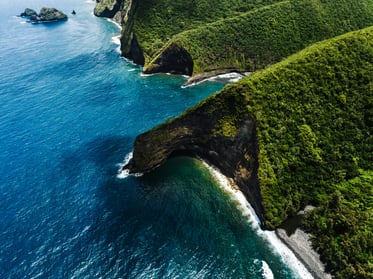
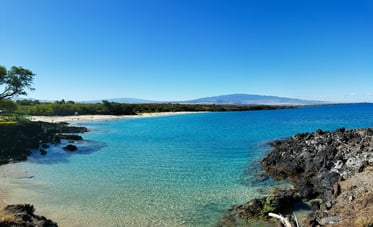
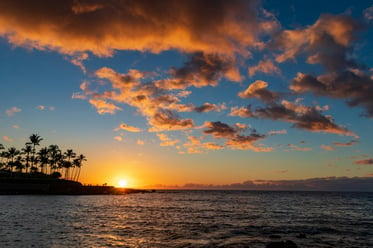
Essential Travel Information for Hawaii
Everything you need to know before your Big Island adventure
Entry Requirements
- For U.S. Citizens: No passport required, only a valid photo ID.
- For International Visitors: Valid passport and ESTA or visa depending on your country.
- COVID Protocols: Check latest Hawaii travel requirements before departure.
- Agricultural Inspection: Fresh fruits, plants, and certain foods must be declared.
Currency & Payments
- Currency: U.S. Dollar (USD).
- Credit Cards: Widely accepted at most establishments.
- ATMs: Available in towns and at banks.
- Tipping: 15-20% is customary for restaurants and services.
Mobile & Internet
- Mobile Coverage: Good in populated areas, spotty in remote locations.
- WiFi: Available at most accommodations and many coffee shops.
- U.S. Carriers: All major U.S. carriers operate in Hawaii.
- International Visitors: Consider a travel SIM or international plan.
Time Zone
- Hawaii Standard Time (HST): UTC-10:00
- No Daylight Saving: Hawaii doesn't observe daylight saving time.
- 10 hours behind Eastern Standard Time when EST is not on daylight saving.
Climate & Weather
- Year-round Tropical Climate: Temperatures typically range from 70-85°F (21-29°C).
- Rainy Season: November to March, but showers can occur any time.
- Microclimates: The island has 8 different climate zones.
- Sun Protection: UV index is high year-round.
Emergency Contacts
- Emergency: 911 for Police, Fire, or Medical emergencies.
- Non-Emergency Police: (808) 935-3311
- Visitor Information: 1-800-GOHAWAII
- Tsunami/Natural Disaster Info: Tune to local radio or TV stations.
Transportation
- Public Transport: Only available via bus. There are no trains, trams, or subways in Hawaii.
- Car Rental: Highly recommended for exploring the island at your own pace.
- Group Transport: Our tour includes shared transfers in a van with a locked storage trailer.
- Daily Movement: Take your day pack with you; larger bags will be stored in the locked trailer.
- Need help searching for a flight? We recommend Skyscanner.com to compare different routes and rates. Click here to search!
Packing Checklist for Camping in Hawaii
Use this checklist to ensure you pack everything you need for your Big Island adventure
Important Packing Notes
- Pack Light: As we will be using shared transfers and spaces throughout the tour, please pack as lightly as possible.
- Water Bottle: Bring a water bottle that can carry 2-4 liters. Clean drinking water will be provided at campgrounds and throughout the day.
- Sleeping Gear: You'll need to bring your own sleeping bag and pillow. All other camping gear will be provided.
- Charging: Limited outlets are available around shower areas. Power banks are strongly recommended.
Travel Documents & Essentials
- ID (driver's license for U.S. citizens) or passport for international visitors
- Flight itinerary & confirmation
- Travel insurance details
- Credit cards and cash
- Emergency contact information
Clothing & Accessories
- Lightweight, breathable shirts and shorts
- Swimwear (at least 2 sets)
- Light rain jacket or poncho
- One lightweight sweater or jacket for evening
- Hiking pants or shorts (quick-dry material)
- Comfortable walking shoes or hiking boots
- Sandals or flip-flops for beach
- Sun hat with wide brim
- Sunglasses with UV protection
- Rash guard for snorkeling/swimming
Camping & Outdoor Gear
- Sleeping bag (camping gear except sleeping bags and pillows will be provided)
- Pillow for camping
- Headlamp or flashlight
- Day pack for hikes and daily activities
- High SPF, reef-safe sunscreen
- Insect repellent
- Quick-dry towel
- Reusable water bottle (2-4 liter capacity)
- Portable power bank for charging devices
- Waterproof phone case
Health & Personal Items
- First-aid kit with basic supplies
- Prescription medications
- Motion sickness remedies (for boat tours)
- Anti-diarrheal medicine
- Pain relievers
- Aloe vera gel for sunburns
- Hand sanitizer
- Insect bite treatment
- Personal toiletries
- Eye drops (volcanic areas can be dusty)
Packing Tips
- Pack light, breathable clothing as Hawaii is warm year-round.
- Bring layers for visiting higher elevations like Mauna Kea, where temperatures can drop significantly.
- Don't forget water shoes for beaches with rocky entries or for exploring tide pools.
- Campgrounds will have trash receptacles and bathroom facilities.
Camping & Trip Details
Important information about your camping experience on the Big Island
- Tents: 3-person camping tents (7x7 feet), used as double occupancy.
- Sleeping Setup: Camping pads provided for the ground beneath your sleeping bags.
- Equipment Provided: All camping gear except sleeping bags and pillows.
- Storage: Larger bags stored in a locked trailer behind the van during the day.
- Water Access: Clean drinking water provided at campgrounds in the mornings and throughout the day.
- Waste Disposal: Campgrounds have trash receptacles.
- Bathrooms: Accessible at campgrounds and during the day.
- Charging: Limited outlets available near shower areas. Power banks recommended.
- Staple Foods: Rice, pasta, lentils, beans, couscous, oatmeal, granola, etc.
- Snacks: Trail foods including crackers, cheese, energy bars, fresh and/or dried fruit.
- Dietary Accommodations: Regular accommodations for vegetarian diets and food allergies.
- Important Note: You MUST include your dietary needs in your traveler form - it's too late once you've arrived!
- Guide Equipment: Our guides carry company-issued first aid kits, satellite phones (for emergencies only), and epinephrine kits.
- Daily Essentials: Carry your day pack with essentials during activities.
- Medical Conditions: Please inform us of any medical conditions or special needs before the trip.
- Emergency Plan: Guides are trained in emergency protocols and wilderness first aid.
Have Questions?
If you need any clarification about camping arrangements, food, or other trip details, please contact our support team before your adventure begins.
Top Destinations & Experiences
Discover the incredible places you'll visit during your Big Island adventure
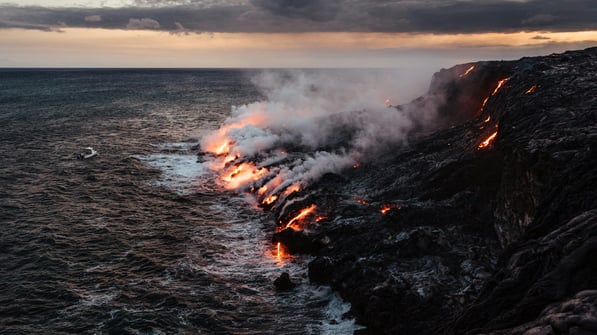
Hawaii Volcanoes National Park
Experience one of the world's most active volcanoes and the dramatic Kilauea caldera in this UNESCO World Heritage site.
Must-See Attractions:
- Kilauea Visitor Center - Start your visit here for current eruption updates
- Crater Rim Drive - 11-mile road with stunning viewpoints
- Thurston Lava Tube - Walk through a 500-year-old lava cave
- Chain of Craters Road - Dramatic coastal drive with ancient petroglyphs
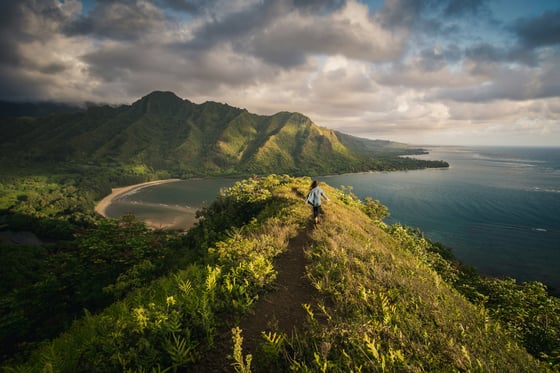
Kona Coast
The sunny west coast is home to beautiful beaches, historic sites, and world-famous Kona coffee.
Must-See Attractions:
- Kailua-Kona - Historic seaside town with shops and restaurants
- Kealakekua Bay - Premier snorkeling spot with vibrant marine life
- Coffee Farms - Tour and taste authentic Kona coffee
- Pu'uhonua o Hōnaunau - Ancient place of refuge with historical significance

Hamakua Coast & Hilo
The lush eastern side of the island features tropical rainforests, waterfalls, and botanical gardens.
Must-See Attractions:
- Akaka Falls - 442-foot waterfall surrounded by lush rainforest
- Hawaii Tropical Botanical Garden - Over 2,000 species of tropical plants
- Waipi'o Valley - Sacred valley with black sand beach (viewpoint currently accessible)
- Liliuokalani Gardens - Beautiful Japanese gardens overlooking Hilo Bay
Must-Try Foods
Hawaiian cuisine is a delicious fusion of Polynesian, Asian, and American influences. Here are some local delicacies you shouldn't miss:
Poke
Fresh raw fish cubed and marinated with soy sauce, sesame oil, and various toppings
Laulau
Pork wrapped in taro leaves and steamed to perfection
Kalua Pig
Traditional Hawaiian slow-roasted pork with a smoky flavor
Loco Moco
Rice topped with a hamburger patty, fried egg, and brown gravy
Shave Ice
Finely shaved ice with tropical syrups, often served with ice cream
Spam Musubi
Grilled Spam on rice wrapped with nori, a popular Hawaiian snack
Local Culture & Responsible Travel
Tips for respectful travel and cultural awareness during your adventure
Hawaiian Culture & Etiquette
- Aloha Spirit: Embrace the Hawaiian concept of love, peace, and compassion.
- Lei Etiquette: Never refuse a lei, as it's considered disrespectful. Remove it in private, not in front of the giver.
- Sacred Sites: Respect heiau (temples) and other historic sites. Don't move rocks or disturb structures.
- Language: Learn a few Hawaiian words like "Aloha" (hello/goodbye), "Mahalo" (thank you), and "Ohana" (family).
- Island Time: Embrace the relaxed pace; things move slower in Hawaii.
Responsible Tourism
- Ocean Safety: Use reef-safe sunscreen to protect the coral reefs.
- Wildlife Respect: Keep a respectful distance from sea turtles, monk seals, and other wildlife.
- Pack It In, Pack It Out: Leave no trace at beaches, parks, and trails.
- Cultural Sensitivity: Ask permission before taking photos of people, especially at cultural events.
- Support Local: Shop at farmers markets and dine at locally owned restaurants.
⚠️ Important Safety Notes
- Never turn your back to the ocean; unexpected large waves can occur.
- Check ocean conditions before swimming, snorkeling, or surfing.
- Stay on marked trails when hiking to protect yourself and the environment.
- Be cautious around lava fields; surfaces can be unstable and sharp.
Tipping
Tips for guides, drivers and restaurants are not included. Tips provide supplemental income, and, while not mandatory, are greatly appreciated. If the local teams have added to the experience, please reward them.
| Guides | USD $15-20 per person/per day | |
| Drivers | USD $10-15 per person/per day |
